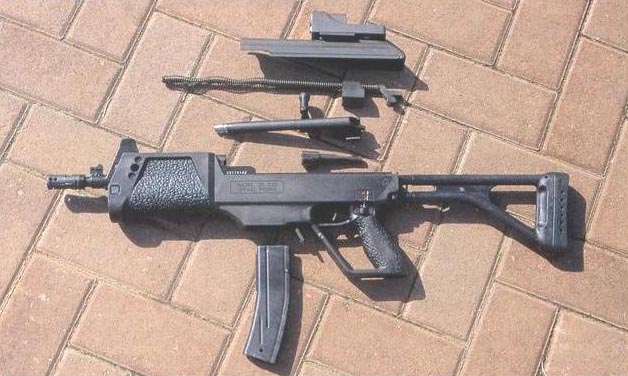The Police use the .30 Carbine until they decided to go "ultra-military" with the M4.
40 years ago the .30 Carbine was considered "ultra-military"
The Police use the .30 Carbine until they decided to go "ultra-military" with the M4.
If 30 carbine was better than 223/5.56 then the police and counter terrorism/special forces would use it, which they do not.
30 carbine worked great in the M1, and was perfect for the role it was designed for. If gun manufactures had seen a market to keep it in production, all these ideas would exist all exist today.
Accuracy, not "spray and pray" worked for Detective Cirillo. The M4 was available, but he didn't use it.
Jim Cirillo was using the 110 grain Winchester Hollow Soft Points while working with the NYPD "Stake Out Squad" as early as 1966.
The M1 Carbine garnered a great deal of praise in the Pacific Theatre when in the hands of the Army, Navy and the U.S. Marines. They worked then, and they work today.
Quote:
If 30 carbine was better than 223/5.56 then the police and counter terrorism/special forces would use it, which they do not.
This is not necessarily true. Even IF the .30 carbine was "better" than the .223/5.56 (which is a separate argument), it might not be used by police and counter terrorism forces.
There is no bureaucratic organization I know of that will spend its money to buy "the best" when "second best" or "fully good enough" can be had for FREE, or at reduced cost through govt. support.
In other words, these groups, by and large, use the AR and 5.56mm because #1, they work, and #2, they get them cheap /free. If the govt handed out and supported M1 Carbines, they would use M1 Carbines.
Quote:
30 carbine worked great in the M1, and was perfect for the role it was designed for. If gun manufactures had seen a market to keep it in production, all these ideas would exist all exist today.
The .30 Carbine M1 is still in production today. Not the top of the popular sales charts, agreed, but it is still in production.
Quote:
Accuracy, not "spray and pray" worked for Detective Cirillo. The M4 was available, but he didn't use it.
Quote:
Jim Cirillo was using the 110 grain Winchester Hollow Soft Points while working with the NYPD "Stake Out Squad" as early as 1966.
Small point of order, here.. the M4 was not available during the 60s or 70s when Cirillo was doing his work. Other AR versions were, but not the M4.
The NYPD stake out squad experience clearly shows how well the .30 carbine and soft points work, at across the room ranges. I believe another popular gun on the Stake Out Squad was the short barrel 12ga.
Take a good look at what the .30 carbine round actually is. Leaving aside (for the moment) the differences between .30 and .35 caliber, the .30 carbine, fired from a carbine, gives you a couple hundred fps more than the same weight bullet (110gr) fired from a long barrel (8") .357 Magnum revolver.
SO, yes, it is going to be effective. Particularly with soft points.
Stories of the .30 carbine being ineffective generally come from military use, where longer ranges, GI ball ammo and barrier penetration are involved. Oh, and the other thing involved was GIs.
GIs who "knew" they hit, and when the enemy didn't drop instantly concluded the .30 carbine "failed". These stories take on a life of their own, myth becomes legend, legend becomes "accepted fact", etc.
Quote:
The M1 Carbine garnered a great deal of praise in the Pacific Theatre when in the hands of the Army, Navy and the U.S. Marines. They worked then, and they work today.
Absolutely. Most of the time combat ranges were short (jungle, etc) and well within the carbine's effective range. HOWEVER, they also understood what the carbine wouldn't do, and compensated for that with heavier weapons.
The .30 Carbine can take Whitetail deer out as far as 50 yards. If you are caught trying to do that with a 9mm, you'll either get a hefty fine or jail time.
Rifles using centerfire, mushrooming ammunition.
Handguns or pistols using centerfire, mushrooming ammunition.
-"The reasons for the choice of caliber are a complete mystery."
-"The .30 Carbine cartridge was suggested by Mr. Edwin Pugsley of Winchester, but why he suggested it, or why the Army adopted it is very puzzling in light of previous US Army knowledge and experience."
-"The .30 Carbine cartridge was adopted without any developmental testing to speak of, and this is very unusual in the US Army."

